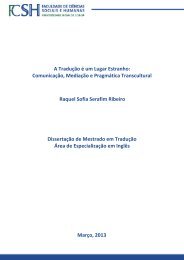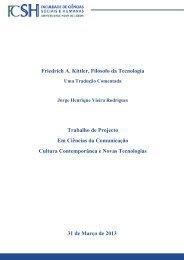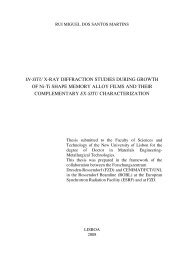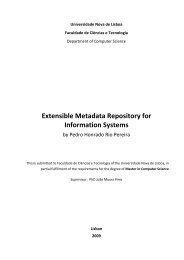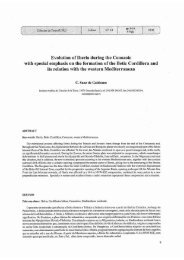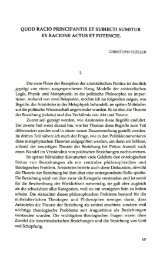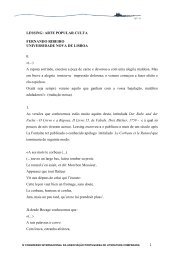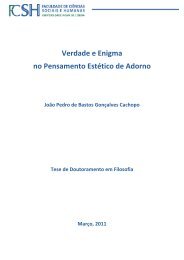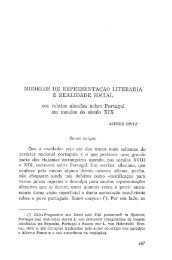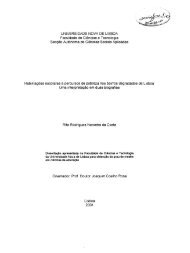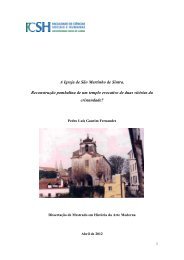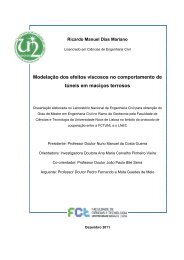Elias Manuel Morgado Pinheiro Dissertação de Mestrado em ...
Elias Manuel Morgado Pinheiro Dissertação de Mestrado em ...
Elias Manuel Morgado Pinheiro Dissertação de Mestrado em ...
You also want an ePaper? Increase the reach of your titles
YUMPU automatically turns print PDFs into web optimized ePapers that Google loves.
etter part, that notion prevails today. However, i<strong>de</strong>ntifying this origin proved to be a<br />
much more daunting task, one that has produced a heated <strong>de</strong>bate that rages on today.<br />
Throughout most of the 20 th century, the homogeny found in chariots from the<br />
Southern Ukrainian steppe, West Asia and Egypt, lead scholars to the assumption of a<br />
common origin. That concept was further expan<strong>de</strong>d into the notion that a single people<br />
was responsible for the <strong>de</strong>velopment and spread of the war chariot. Therefore, it stands<br />
to reason, that in or<strong>de</strong>r to i<strong>de</strong>ntify the origin of the technology, one simply had to find a<br />
foreign el<strong>em</strong>ent associated with it, within pre-existing societies. Thus, in the Near East,<br />
two different groups of people, both to an extent foreigners, became the focus of the<br />
discussion: the Hurrian and Kassite speakers 1 . Of the two, the former was of particular<br />
interest, in great measure due to the Mitanni political syst<strong>em</strong>, where an Indo-European<br />
superstrate existed over a Hurrian substrate 2 .<br />
Mittani, in general, and the Indo-European el<strong>em</strong>ent, in particular, were closely<br />
associated with chariotry and horse-breeding. A particular text (CTH 284), authored by<br />
Kikkuli of Mittani, <strong>de</strong>aling with horse breeding and training, attests this association.<br />
Despite being written in Hittite language, the author introduces himself has “Kikkuli,<br />
master horse trainer of the land of Mitanni” 3 . Additionally, the Kikkuli text is notorious<br />
for the presence of a significant number of Indo-European loanwords, which further<br />
<strong>em</strong>phasizes the connection.<br />
So, in light of this evi<strong>de</strong>nce, the theory that the light horse-drawn chariot had<br />
been introduced in the Near East, in its final form, by groups of Indo-European speakers<br />
from beyond the Caucasus arose. This view was crystallized in the early 1960‟s by<br />
Albrecht Goetze. In 1963 he wrote:<br />
“What is important [...] is the role played […] by the Hurrians and by the thin<br />
layer of Indians which revitalized th<strong>em</strong> from about 1650 on. For to th<strong>em</strong> can be traced a<br />
fundamental change in the technique of warfare which is recognizable everywhere in<br />
the Near East at that time and characterizes the period as nothing else. It is the<br />
introduction of the light horse-drawn chariot. […]The result was that henceforth warfare<br />
was essentially different from what it had been before. 4 ”<br />
He further ad<strong>de</strong>d:<br />
1 Moorey. 1986, p.197<br />
2 Thi<strong>em</strong>e, 1960<br />
3 Nyland, 2009, p.9<br />
4 Goetze, 1963, p.124-125<br />
6



